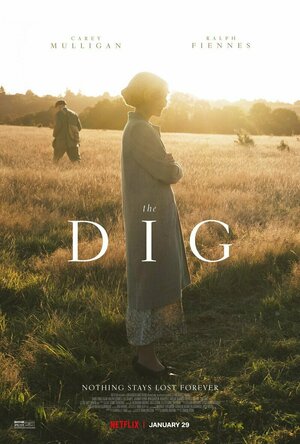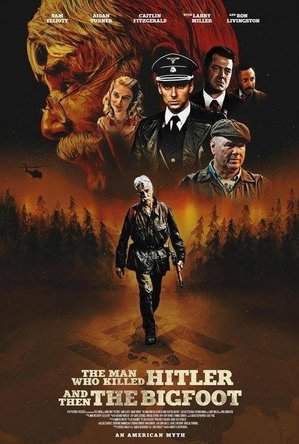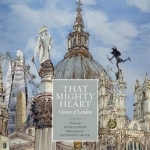
That Mighty Heart: Visions of London
John Elinger and Katherine Shock
Book
In 1802 William Wordsworth, the great Romantic poet, gazed over London and claimed "Earth has not...

Grand Hotel Abyss: The Lives of the Frankfurt School
Book
This brilliant group biography asks who were the Frankfurt School and why they matter today In 1923,...
Heather Cranmer (2721 KP) created a post
Feb 6, 2021 (Updated Feb 6, 2021)
Alex Kapranos recommended Greek Music From The Underground by Various in Music (curated)
Bob Mann (459 KP) rated The Dig (2021) in Movies
Jan 31, 2021
Against this backdrop there is a critical illness emerging, a son (Archie Barnes) and his attachment to the father figure of Brown and a potential romance between Rory and archaeologist Peggy Piggott, trapped in a loveless marriage.
Talent:
Starring: Carey Mulligan, Ralph Fiennes, Johnny Flynn, Lily James, Archie Barnes, Ken Stott, Monica Donlan.
Directed by: Simon Stone.
Written by: Moira Buffini (from the novel by John Preston).
Bullet points of my thoughts:
+ Superb acting by Mulligan and Fiennes – Oscar noms for both?
+ Young Archie Barnes impresses as the son Robert
+ Cinematography by Mike Eley shows the open Suffolk skies at their best
+ Based on fact, a fascinating historical record of the real excitement of uncovering the past
o The script deftly melds the archeology with the love story subplot: but was the latter really necessary?
– Curious “man heavy” script, replacing some of the historical female characters with men and making Peggy Piggott (Lily James) a bit of a klutz
– Asynchronous editing decision I found to be distracting and unnecessary.
For my full review, please see the video at https://youtu.be/m8Ad8B8dkSY .
LeftSideCut (3776 KP) rated The Man Who Killed Hitler and Then the Bigfoot (2018) in Movies
Dec 9, 2020
The film focuses on the life of Calvin Barr, an old man portrayed by Sam Elliott. He's a guy who's lonely, seen some shit in his time, and feeling his age until one day, he's approached by the government to hunt and kill the legendary Bigfoot, and put a stop to a potential world ending plague. Calvin is a bit of a legendary creature himself, having served in WWII, and is said to have killed Hitler himself before it was covered up, and his immunity to this killer plague makes him the perfect candidate.
This quirky other wordly narrative is quite a jarring contrast to the otherwise grounded drama that makes up the rest of the plot. Flashbacks tell of Calvin's life before the war, and how he met the woman he wanted to marry. It's essentially a love story, that veers into bonkers territory at the flick of a switch.
Somehow though, it all works really well. The screenplay is top notch and gives us some engaging characters with a great cast. Sam Elliott has the grizzled old man role down to a tee by now. Aidan Turner plays the younger Calvin, and the relationship between him and Caitlin Fitzgerald's character is believable and touching. Larry Miller also stars as Calvin's brother and the two of them also have decent chemistry.
This movie is overflowing with gorgeous shots. The last third especially is a visual feast, and it's all complimented by a wonderful score, courtesy of Joe Kraemer.
If you're looking for a schlocky bad-good film suggested by the title then you're in the wrong place. This is a charming and quirky character drama with sprinkles of a creature feature, and I can fully see why some might not get on with it, but for me, it just works.
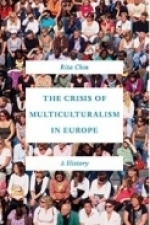
The Crisis of Multiculturalism in Europe: A History
Book
A history of modern European cultural pluralism, its current crisis, and its uncertain future In...
Politics social issues
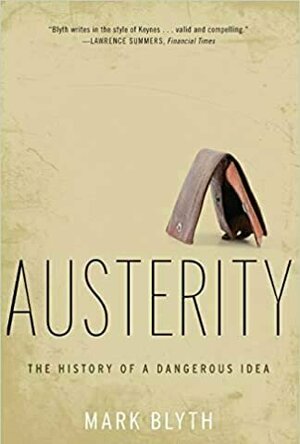
Austerity
Book
Governments today in both Europe and the United States have succeeded in casting government spending...

Accidental Presidents
Book
This New York Times bestselling "deep dive into the terms of eight former presidents is chock-full...
Bob Mann (459 KP) rated Flatliners (2017) in Movies
Sep 29, 2021
But the concept was sufficiently enticing – who isn’t a little bit intrigued by the question of “what’s beyond”? – that Cross Creek Pictures thought it worthy of dusting off and giving it another outing in pursuit of dirty lucre. But unfortunately this offering adds little to the property’s reputation.
In this version, the lead role is headed up by Ellen Page (“Inception”) who is a great actress… too good for this stuff. Also in that category is Diego Luna, who really made an impact in “Rogue One” but here has little to work with in terms of backstory. The remaining three doctors – Nina Dobrev as “the sexy one”; James Norton (“War and Peace”) as “the posh boy” and Kiersey Clemons as the “cute but repressed one”, all have even less backstory and struggle to make a great impact.
Still struggling to get the high score on Angry Birds: from left to right Ray (Diego Luna), Sophia (Kiersey Clemons), Marlo (Nina Dobrev), Courtney (Ellen Page) and Jamie (James Norton).
Also putting in an appearance, as the one link from the original film, is Kiefer Sutherland as a senior member of the teaching staff. But he’s not playing the same character (that WOULD have been a bloody miracle!) and although Sutherland adds gravitas he really is given criminally little to do. What was director Niels Arden Oplev (“The Girl with the Dragon Tattoo”) thinking?
In terms of the story, it’s pretty much a re-hash of Peter Filardi’s original, with Ben Ripley (“Source Code”) adding a few minor tweaks to the screenplay to update it for the current generation. But I will levy the same criticism of this film as I levied at the recent Stephen King adaptation of “It”: for horror to work well it need to obey some decent ‘rules of physics’ and although most of the scenes work (since a lot of the “action” is sensibly based inside the character’s heads) there are the occasional linkages to the ‘real world’ that generate a “WTF???” response. A seemingly indestructible Mini car (which is also clearly untraceable by the police!) and a knife incident at the dockside are two cases in point.
Is there anything good to say about this film? Well, there are certainly a few tense moments that make the hairs on your neck at least start to stand to attention. But these are few and far between, amongst a sea of movie ‘meh’. It’s certainly not going to be the worst film I see this year, since at least I wasn’t completely bored for the two hours. But I won’t remember this one in a few weeks. As a summary in the form of a “Black Adder” quote, it’s all a bit like a broken pencil….. pointless.

